Warmth is the key to comfort in the house. This is especially valuable in the off-season, when the differences between night and day temperatures can reach 20 degrees. How to quickly and safely warm up a country or country house? How to warm up an apartment while utilities have not yet provided heat?
You need a heater that is environmentally friendly, safe and cost effective. All of the above requirements are met by infrared devices.
The editors of the site "bestx.htgetrid.com/en/" have prepared for you a rating of the best infrared heaters for home and summer cottages for 2020.
Content
The principle of operation of an infrared heater and
The surface of electrical and oil devices has a high temperature, especially those that use a tungsten or nichrome filament as a heating element. The air near such surfaces heats up, and during the heating process, moisture evaporates from it. Excessively dry indoor air adversely affects the microclimate in it, and the state of the human respiratory tract.
Upon contact with a hot electric current (filaments), the air is intensely oxidized, the oxygen content in it decreases. Lack of oxygen can cause headaches and discomfort.
With intense heating, hot air masses rise upward. The more intensively the device works, the more actively the air circulation process takes place. At the same time, the smallest dust particles rise up from the floor, which also negatively affects the cleanliness of the air and the well-being of the residents of the apartment. On top of that, many electric heater models are equipped with fans to speed up the air circulation and cool the heating element at the same time. Dust is carried along with the air that the fan accelerates.
The infrared heaters are almost completely devoid of the above disadvantages.
Infrared heaters differ from the usual oil and electric heaters in that they do not heat the air around them, but emit infrared waves that heat furniture, walls, and the floor. A wave of the infrared spectrum passes through the air without heating it, reaches surfaces, is absorbed and reflected by them. Objects heated in this way begin, in turn, to emit heat, warming the air. This principle is more natural and close to natural, as the sun heats a stone on a garden path or a wall of a house on a summer day, the warmth from which we then feel.
A feature of such heating is the possibility of directional action - the heat of the IR rays will be felt near the heating device, while the real temperature in the room may be lower than what is felt, because a person will feel not heated air, but the heat of infrared rays. Due to the radiant heat, the devices are effective in poorly heated rooms, in houses with drafts, outdoors or on an open terrace.
In the off-season, many summer cafes hang infrared heating devices above the tables, which, without heating the air in the room, warm the visitors.
Another advantage of infrared devices is noiselessness. Their electrical versions can be considered absolutely noiseless due to the absence of moving parts.
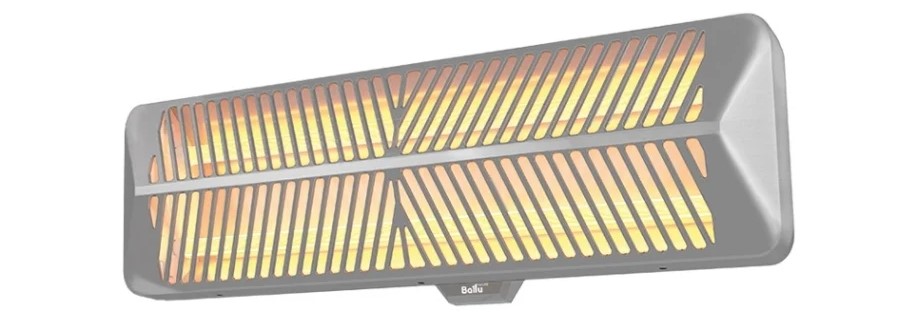
What are infrared heaters?
By the type of energy source used for heating
- Diesel. For heating, an air-diesel mixture is used, which is fed through the nozzles to the heated electrodes and ignites upon contact with air. When the mixture burns, infrared rays are formed. This type is designed for large areas with good ventilation.
- Gas. They consist of a device for supplying a gas mixture, a piezo element, a ceramic heating element, a housing and a protective grill.
The gas mixture, ignited by means of a piezo igniter, is fed to a ceramic grate, which consists of many small cells. The grille, warming up, begins to emit infrared rays. It is noteworthy that such devices can be used for cooking or in order to melt ice, or to warm up the engine. - Electrical. Electricity is used to heat the elements of the device. This type of heat emitters is most often used as a heater for homes and summer cottages.
By the length of the emitted waves
The spectrum of infrared waves is usually divided into short-wave (0.7 - 2.0 microns), medium-wave (2.0 - 3.5 microns) and long-wave (over 3.5 microns) parts. The higher the temperature of the infrared source in the device, the shorter the wavelength of its radiation.
- Shortwave. Emit IR wavelengths 0.74 - 2.5 μm. This is the visible spectrum of radiation. Halogen lamps are used as a heating element. At this wavelength, burns can occur in the immediate vicinity of the appliance, and objects and surfaces can heat up to the ignition temperature, remember this when installing heaters.
- Medium wave. The temperature of the emitters of the middle spectrum reaches 700 С °. In this case, the glow turns into the visible part of the spectrum and has a color from red to orange. Quartz tubes with a tungsten filament inside are used as an emitter in such units. Ceramic or perforated aluminum can be used instead of quartz. Devices of this type are recommended to be installed on the ceiling at a height of at least 3 meters. Mobile designs of medium wave heaters are equipped with a rotating mechanism that rotates the reflector to avoid overheating of surfaces. Medium wave heaters are suitable for heating and heating industrial premises, open spaces and houses with large high ceilings.
- Long-wave heaters consist of a radiator heated by a heating element; other design solutions can also be used, for example, a sealed container with quartz sand, heated by a spiral inside it. The temperature of the emitters of short-wave devices is lower than that of the first two categories, they are most often used for use at home and in the country.
By the method of installation and fastening
- Ceiling;
- Wall mounted;
- Floor and mobile;
- Skirting boards are a new direction in installation. Long-wave heaters are mounted around the perimeter of the room at the level of the baseboard or in a specially designed baseboard. Typically used in addition to ceiling medium wavelengths.
How to calculate the power of the heater?
In order for the room to heat up evenly and enough for a comfortable stay, you need to calculate how much and what power of heating devices you need. Typically, the power is calculated at the rate of 100 watts per square meter. But in practice, it is also worth considering the material of the walls of the house, the number and area of glazing, the height of the ceilings, drafts, the amount and material of furniture in the room, and other factors. The best solution would be to use a combination of heaters, ceiling and wall, with a power budget 10-15% higher than required, and with temperature control. So, in case of abnormal cold weather or failure of one of the devices, you will be sure that you will not freeze.
Best IR Heaters for 2020
Models included in the review:
| Model | Price |
|---|---|
| Ballu BIH-S2-0.6 | 3 290 ₽ |
| Hyundai H-HC4-25-UI710 | 2 684 ₽ |
| RESANTA ICO-2000 | 3 230 ₽ |
| Timberk TCH Q2 800 | 770 ₽ |
| Peony 10 Lux | 4 150 ₽ |
| Timberk TCH AR7 1000 | 1 736 ₽ |
| Timberk TIR HP1 1800 | 3 617 ₽ |
Timberk TIR HP1 1800
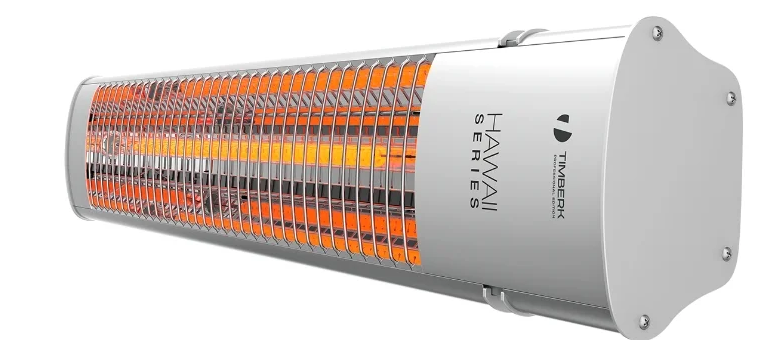
The seventh place in the rating is taken by the Scandinavian brand of climate technology.
Medium wave device. Includes wall, ceiling, and telescopic arm. The rod is not included in the kit, it needs to be purchased additionally.
Timberk TIR HP1 1800 consists of a carbon fiber heating element, a reflector mounted behind the heater, a thermally insulated casing and a protective grill.
The declared power of the device - 1800 W corresponds to a heated area of 16-18 sq.m.
The unit has a class of protection against dust and water IP65, withstands exposure to rain and directed jets of water, which allows it to be operated not only at home, but also outdoors and in wet rooms.
Advantages:
- fast heating;
- adjustable angle of inclination;
- protection from water and dust;
- attractive design.
Disadvantages:
- no remote control as standard.
Timberk TCH AR7 1000

The sixth place is taken by another representative of the Scandinavian brand - a stationary long-wave unit.
Wall or ceiling mountable with included brackets.
As an additional option, the manufacturer offers outrigger mounts that allow the heater to be installed at a distance from the wall or ceiling.
The heating element consists of an aluminum heating element made in the form of tubes. This design, in combination with a steel reflector, provides a directional flow of infrared radiation, which makes it possible to use the equipment in open spaces, loggias or verandas.
The power of the device is sufficient for heating 10 sq.m. and is 1000 W.
The temperature of the Timberk TCH AR7 1000 heating element is 250-300 С ° on the heating element surface.
The body and the grille do not heat up to such values, which makes it possible to safely place the heater not only on the ceiling, but also on the walls at a low height.
Another safety guarantee is the overheating safety switch.
Advantages:
- profitability;
- overheat protection;
- quick access to operating temperature.
Disadvantages:
- no heating temperature adjustment;
- lack of remote control.
Peony 10 Lux
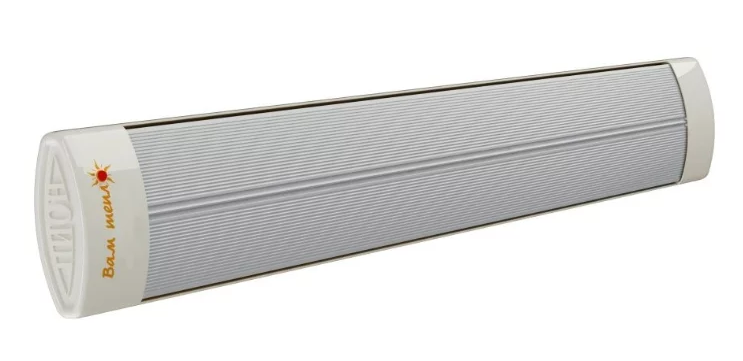
Russian-made infrared heat generator. One heating element is used as a heating device, which transfers heat to a reflective plate.
The recommended area of the heated room is 10 sq.m.
Peony 10 Lux is fixed to the ceiling or to the wall using the fasteners included in the kit.
The device is available in three colors - white, beige and yellow.
Advantages:
- profitability;
- high-quality assembly.
Disadvantages:
- no heating temperature adjustment;
- lack of remote control.
Timberk TCH Q2 800

In fourth place is the portable unit.
Two carbon tubes are used as heating elements.
The total power of the device is 800 W. Each of the heating elements can be switched on separately, thus adjusting the heating power.
The device has an automatic shutdown when overturning, it is implemented using a button on the back of the case.
The body is made of heat-resistant plastic, from the back it is thermally insulated from the metal reflector plates. There is a carrying handle at the top of the case.
The power of the device is sufficient to heat a room with an area of 10-12 sq.m.
Advantages:
- power adjustment;
- compact size.
Disadvantages:
- The rollover protection mechanism will only work if the device falls on the rear surface, therefore this protection cannot be considered absolutely reliable.
RESANTA ICO-2000
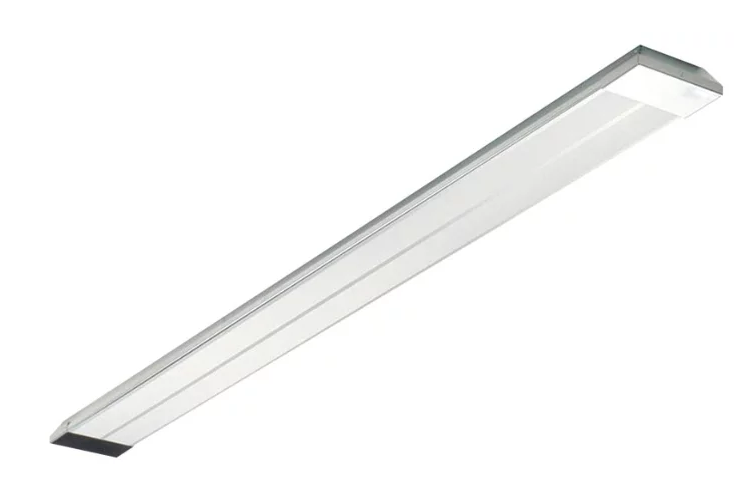
The third most popular place among buyers is the infrared heater produced by RESANTA.
The device consists of two heating elements, which heat the radiating panels up to 250 ° C.
According to the instructions, only installation on the ceiling at a height of at least 2.5 m from the floor is allowed.
During installation, it is recommended to place the device at a distance of at least 10 cm from the ceiling and at least 50 cm from the nearest object that may be subject to prolonged heating.
The declared power is 2000 W. If you use the model as the main heat source, this power is enough for a room with an area of 20 square meters. When used as an additional heater, the area will be 40 sq.m.
Advantages:
- large area of radiating panels;
- profitability.
Disadvantages:
- no heating power adjustment.
Hyundai H-HC4-25-UI710
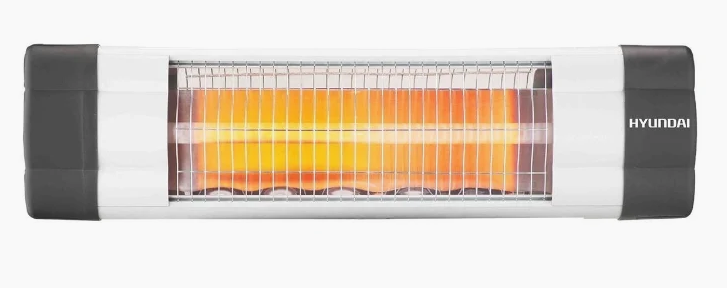
The second place in the opinion of buyers is occupied by the mid-wave infrared device Hyundai H-HC4-25-UI710. It uses a carbon fiber tube enclosed in heat-resistant glass as a heating element.
The model can be mounted on a wall; as an option, the manufacturer offers mounting on a tripod, which is purchased separately.
Due to the waves of the middle spectrum, the heater is able to give a directed beam of infrared rays, quickly warming up the surface.
The rated power of 2500 W is sufficient to heat a room with an area of 20 sq. M.
The Hyundai H-HC4-25-UI710 has a temperature control and a safety device that turns off the device if it overheats.
Advantages:
- instant exit to operating mode;
- variable angle of inclination of the heater;
- overheat protection.
Disadvantages:
- spirals emit in the visible part of the spectrum, which can interfere in the dark.
Ballu BIH-S2-0.6
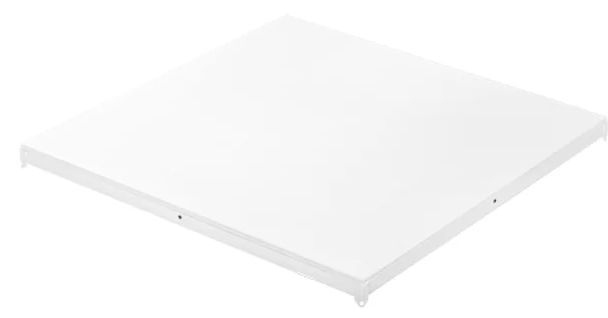
The first place in the rating of home heaters is occupied by a device more suitable for use in offices. This is a ceiling option designed to be integrated into the Armstrong false ceiling system. It has dimensions of 60 by 60 cm and exactly matches the size of the ceiling tiles.
The principle of operation of the model is comparable to the operation of a "warm floor" - a heating coil is installed on a heat-insulating substrate, closed from above by a composite material that radiates heat received from heating the coil.
For ease of installation in each of the four corners of the heater there are lugs for mounting on hangers.
The declared power consumption is 600 W, with a recommended room area of 12 sq.m.
Advantages:
- high efficiency;
- profitability;
- safety.
Disadvantages:
- designed for suspended ceilings, which limits the possibility of use in small houses.
Tips for installing infrared heaters
The reliability of the further use of the device will ensure that you follow some advice for mounting equipment:
- To connect the heater, select a cable with a cross section of at least 1.5 mm.
- Follow the manufacturer's instructions for positioning the appliance carefully, especially with regard to height and distance to objects.
- Make sure that the unit, especially the shortwave and mediumwave, is not accessible to children.
- Install an additional thermostat to be able to regulate the heating temperature.
If you have doubts about the installation or the choice of the power of the device, consult with specialists and entrust them with the selection of equipment and its installation.
If you have any experience with infrared heaters or useful tips related to their operation, share them in the comments.












